
One was a pure drytoling route that Dave named White Noise. The other was a series of icefalls, a section of blank rock and a steep icicle and Dave named this The Snotter.
The drytool route was controversial. Drytooling has so far mainly been kept to low-lying quarries, so Dave's ascent was always going to raise a few eyebrows. But the other route also proved controversial with some prominent climbers and climbing commentators stating it was not a true Scottish winter route.
We caught up with Dave to discuss Scottish winter, Ben Nevis, the routes themselves, and his feelings about the whole affair.
Dave blogged about the routes after he had climbed them, and has subsequently removed some of his blog posts. He explains his thoughts behind this, and also his thoughts on blogs, forums and internet reports in the interview below.
INTERVIEW: Dave MacLeod
How many days do you think you've spent on Ben Nevis now Dave - summer and winter?
It's certainly in the hundreds but I have only been up 5 or 10 days a year in the past few years. After I did Echo Wall it was good to go to some other places for a bit. Since I live locally, I feel like a Ben Nevis stranger compared to many mountain guide friends who are up the Ben every morning, even on their days off from work.
Which were the most memorable of those days and why?
I've had more memorable experiences on Ben Nevis than I can count, from being avalanched down Tower Gully as a teenager, over Tower Scoop and all the way to the foot of Observatory Gully, to climbing Echo Wall and much in between. Some of the times I think about most were evenings I ran up to work on Echo Wall by myself. I worked away on the moves until 10.30pm and then could run down Tower Ridge to the hut in 20 minutes or so and back to the dam in another 20 and head home for tea.
How close to the mountain do you live? Can you see it from home?
I live about 20 miles north of the Ben, in the Great Glen by Loch Lochy. My place looks onto the Loch Lochy munros actually, which are great hills for running on and very quiet.
Do you have your eye on any more new lines on there - summer or winter?
Of course there are many many new lines still to be done on Ben Nevis in summer and winter, and some of them will be both really good quality and really hard. The rock on the Ben is quite underrated - for summer climbs it's really great stuff to climb on and is comparatively ignored compared to the winter ice. There's one line on the Ben I might look at in the summer - a 70 metre overhanging wall with a huge horizontal roof at the top. You can see it all the way from Glenfinnan.
What are the stand out routes on the Ben for you?
That's not an easy question to answer - Ben Nevis has so many big corries and faces and many hundreds of routes. It seems quite limiting to say any are the best. My personal favourite is probably Anubis, summer or winter. It just climbs so well and takes such a great rock feature. I had a great time trying to climb it in both summer and winter. In summer I abbed down and cleaned it which took a couple of days and then started trying it on lead, downclimbing from my highpoint each time. Eventually I totally went for it and the moves were great.
Your recent Two Ben Nevis routes - White Noise and The Snotter. There has been some intense scrutiny of the routes , especially The Snotter, as to whether it is in 'winter condition'.
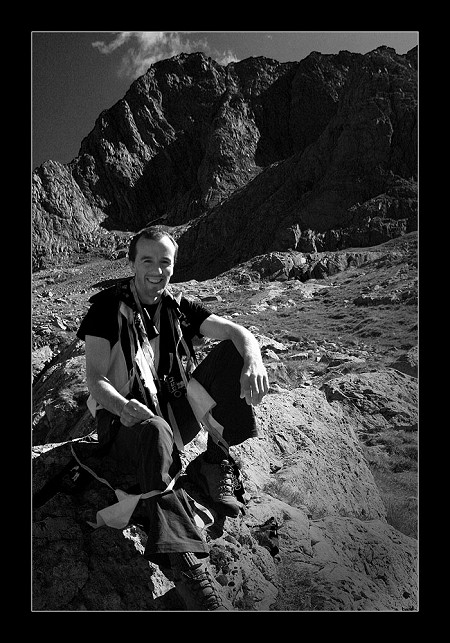
I don't really want to say much about White Noise (he says, about to launch into it!) - I climbed it, explained my thinking behind it, and people felt it should not have been done. So I decided to forget about it. That is quite important. I didn't remove it from my blog because I changed my mind about whether it was a good idea to climb it. I still think it's one of the most satisfying routes I've done on the Ben and I can't think of a feature more suited to that style of climbing. It can't be a winter route (in the commonly used sense of the term) because it just doesn't get white. It's a thin seam that might be 9a minimum in summer. I hesitate to say it's impossible to rock climb, but I couldn't see holds all the way. But it climbs so nicely with ice tools. To say it cannot be climbed because it's in the wrong place seems like back to front thinking to me. The mountains are what they are, we can't move that roof to a roadside quarry. Moreover I don't think it interferes with the winter climbs on the north face above. It's a little crag under the north face. I felt that some of the complaints about it were purely because people couldn't understand why you would want to climb it. That's not a great reason.
You have now removed the route from your blog, what prompted this action?
The main reason I decided to remove my publication of details about it was to bring about some conclusion to the questioning of it. One thing that irritates me is that it's very easy for folk to question, moan or complain about anything new and that hangs in the air indefinitely. I know the Scots have a reputation for being particularly bad for this and the Brits are known for knocking anything down that stands out. It's totally fine to question something, but I think it's good to act on that so that everyone has responsibility for the direction of climbing. If we are going to squash down something new in climbing, let's get it squashed down and move on with the status quo as before. If that's what folk want we should live with the consequences that brings rather than allow the controversy to hang on. To me, the consequences are that Scottish winter climbing becomes ever more stuck in a straightjacket. It's more boring for it.
The other reason I removed the routes is that folk said they would negatively affect other people who winter climb. I don't want to be party to that at all, even if I don't agree that this would actually happen.
I for one am always most inspired to do hard climbs when there is a feeling of freedom in climbing. The mountains are there, full of cliffs and we go out and find what inspires us to climb, without anyone telling us what is a real climb and what is not. The constant poking holes in every aspect of the climbing game is very negative.
It's like that argument on UKC about me entering the West Highland Way race a while ago.
It was that sort of attitude that made me drop out of my school cross country team and disappear into a world of climbing by myself in the hills. With the WHW thing, on one hand folk were saying 'it's just one sour guy, ignore him'. But you can't help feeling 'stuff it, I'll have a better time if I just run it by myself'. Likewise I don't have to share my winter climbs - I can just enjoy them with my climbing partner at the time and then keep them in my memory.
I often think of these sorts of arguments in the context of my education in sports science. I studied a lot of the history and sociology of different sports. At times you think 'jings, why would anyone want to get involved with competitive sport' when you read about all the drugs, backbiting and fakery. It quite often brings out the worst in people and that goes for the people commenting on sport as well as doing it.
Scottish winter climbing has always had this conditions issue hanging over it and it seems to be getting worse. Waiting for literally years for really steep routes to come into condition seems like a poor workaround. I know people say the patience required is virtuous, but there comes a point! And most of the people who have said that aren't really looking to climb the big roofs themselves. I kind of drifted out of Scottish winter climbing in recent seasons and did more bouldering through the winter since I was spending the whole winter walking in with a big rack to a black overhanging wall and walking out again. It's just my personal taste in climbing but doing slabby VIIIs and IXs forever is not that inspiring for me. I want to get on something I don't know if I can do. I know that there are some very steep lines that do sometimes come into white condition, but they are quite few and far between and if the white ethic is applied rigidly then the amount of time wasted waiting starts to outweigh the benefits. I'm not saying the whole ethical framework needs to be changed - definitely not - but on certain cliffs where the good projects are, a more flexible ethic would mean more brilliant hard routes get done.
As things stand, I feel that to indulge my interest in very steep routes, I should go over and climb on things like Robert Jasper's excellent looking new route instead. I still love spending time in the Scottish mountains in winter. Maybe I should do some more exploratory bouldering in winter and running too?
The importance of grade - we first reported your route with a speculative grade (Scottish system) with a question mark at the end based on your thoughts on how hard it might be. This was not to provoke debate about what counts as a Scottish Winter Route, but to give an indicator of potential difficulty (we removed this when we saw it was controversial). Sport routes used to be graded in the UK with E Grades, bouldering grades have several systems these days (Font / V / UK technical), what do you think about the label/importance of grades and grading systems?
I don't really know how important the grading system used is. If it successfully gives a guide to the difficulty of the route, then it's fine. I know people have suggested that the given grade can also be used to pigeonhole the route into a certain discipline. On one hand I can see the logic in that, but it's also quite limiting as routes cannot always be easily classified as one type or another. However, it is quite clear that certain grading systems are just more effective for a certain type of route. For instance, when we used to give sport routes an E grade in the early days of sport climbing, it caused more confusion than clarity in comparing difficulty of routes. The French system is much clearer for that discipline.
The Snotter - it looks like a great route, following icy features, but there was a section of blank rock to gain a hanging icicle. How does this fit in with your understanding of the Scottish winter ethic? Is it about % of dry rock compared to % of ice? Or is it about something else?
I might not be the right man to ask apparently! It's funny to see Simon Richardson and Ian Parnell thinking it is outside Scottish winter, and Guy Robertson and lots of other folk not seeing the problem. Again I think it comes down to this one-size-fits-all straightjacket of the whole route needing to be white with rime. It doesn't fit with how some routes come into good icy condition with freeze-thaw and the action of the sun. It seems to me that climbers of Marshall & Smith's generation just went climbing whenever and took the conditions on the mountain as they came. If it felt wintery and was easier and better to climb with tools, it's a winter route. But it seems no one can agree on a definition today. I'm not even going to try.
Do you think leaner winters in Scotland (is there any arguing that the winters were harder 30 years ago?) might lead to a change in acceptability in Scotland?
I really don't know about this. Probably not. Especially because the weather we have now can actually be more favourable on certain cliffs for making them white. It's wetter and stormier. The lower altitude cliffs are possibly coming into condition less often.
How has the discussion regarding your routes, and the reporting of them on UKC / other blogs / generally / and the following discussion impacted on your thoughts and actions and psyche?
Often, but not always, blogs are more carefully written and are usually interesting and of course they are an influence on me. UKC too, although I try to avoid looking at the forums as much as possible. Mostly I don't know how people find the time to fit in so much reading and writing in between going climbing, but I also find they can be very demoralising to read because such a high proportion of people drag everything down by failing to do proper research before publishing very strong words about lots of climbers. There is also a tendency to point out every possible negative with little balance about the potential positives. It would be a much more influential forum for discussion if people took more care and responsibility to inform themselves, be prepared to use their real name and think how their own words and actions might stand up to the same sort of scrutiny. Everyone can say what they like of course. What I'm getting at is if less care is taken over what posters publish, the more the forum becomes detached from the real discussion, which is a shame.
Thanks Dave, great to talk to you. Good luck with the West Highland Way!
Plus: If you haven't seen it already here's a great video portrait of Dave:
Dave MacLeod is sponsored by GORE-TEX , Scarpa , Black Diamond and Mountain Equipment



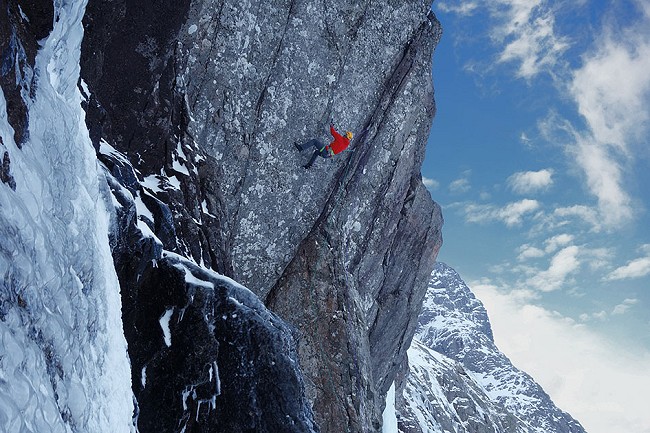
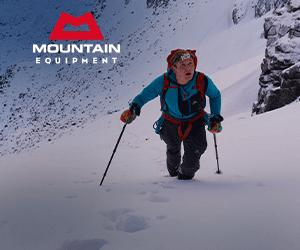

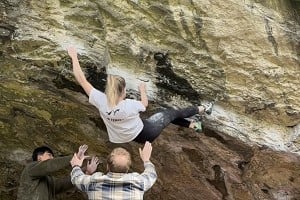
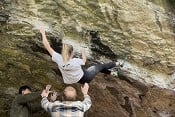

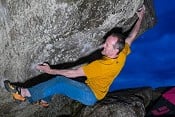

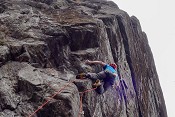
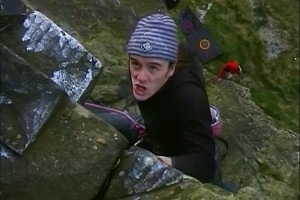
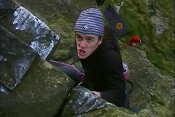
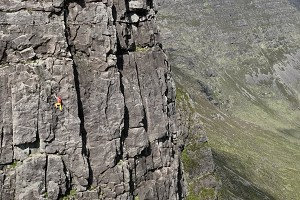
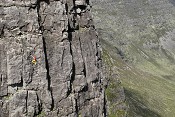

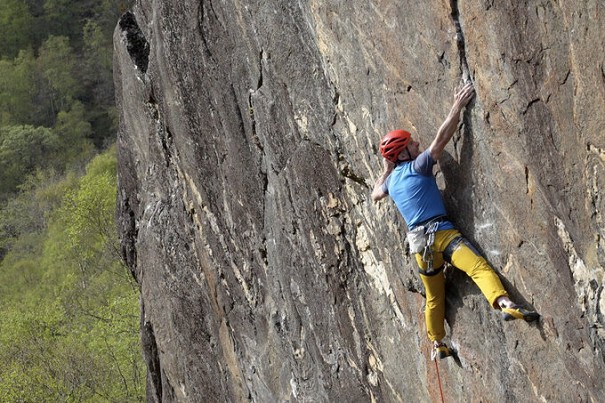

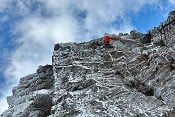

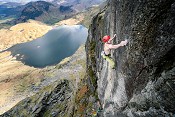
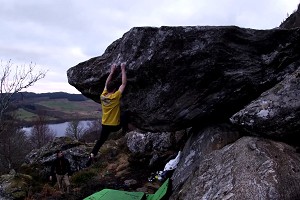
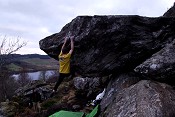


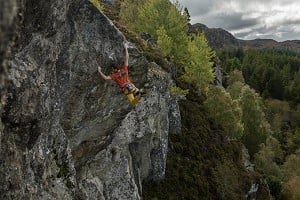
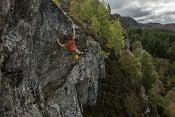
Comments